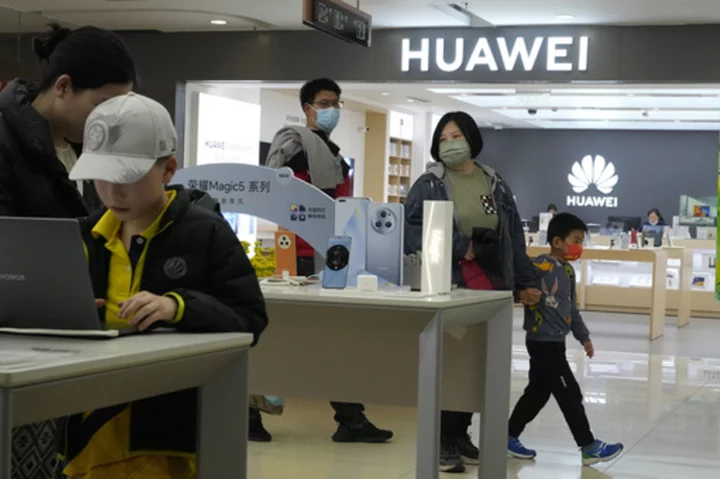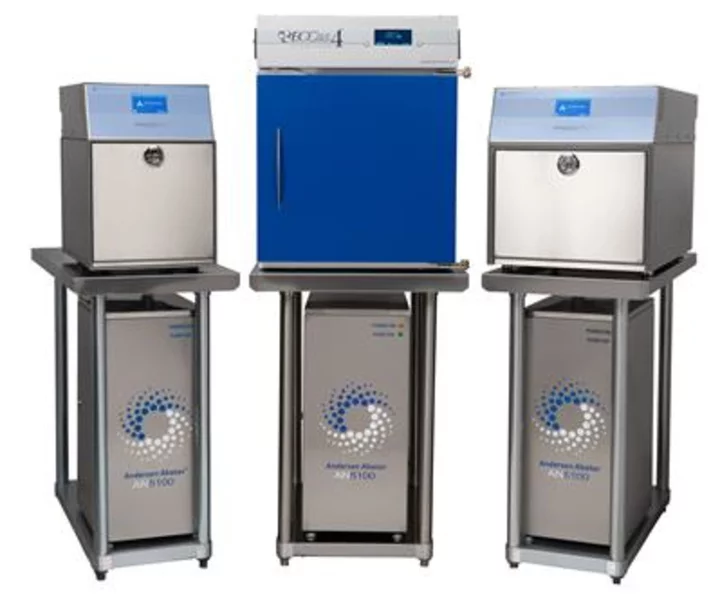BEIJING (AP) — Chinese tech giant Huawei on Friday reported its revenue rose 3% over a year earlier in the first half of 2023 and its profit margin widened despite sanctions that block access to U.S. processor chips and other technology.
China's first global tech brand has responded to U.S. curbs that devastated its smartphone brand by increasing emphasis on selling network gear to hospitals, ports, electric car brands and other industrial customers it believes will be less vulnerable to sanctions.
Revenue in the six months ending in June rose 3.1% to 310.9 billion yuan ($43.1 billion), Huawei Technologies Ltd. said. It gave no profit figure but said its profit margin was 15%, which would be about 45 billion yuan ($6.5 billion) and an increase over the 4.3% margin in the first quarter of this year.
Sales by its infrastructure unit were 167.2 billion yuan ($23.2 billion), according to Huawei. Consumer sales were 103.5 billion yuan ($14.3 billion). Sales by the fledgling automotive unit, which supplies network and other technology for electric cars, were 1 billion yuan ($138.6 billion).
Huawei struggled after then-President Donald Trump cut off access to U.S. processor chips and other technology in a feud with Beijing over technology and security. American officials say the company is a security risk and might facilitate Chinese spying, which Huawei denies.
In 2020, then-chairman Eric Xu said the company was “back to business as usual” despite sanctions.
The company is the biggest global maker of network equipment for phone and internet companies. It sold its lower-priced Honor smartphone brand in 2020. It still sells handsets under its Huawei brand but focuses on the China market while sales abroad have plunged.
Huawei reported earlier 2022 profit fell 70% to 35.6 billion yuan ($5.2 billion) while sales rose 0.9% to 642.3 billion yuan ($93.5 billion).
Half of Huawei’s 207,000 employees work in research and development. The company says it has been able to develop replacements for U.S. components. Huawei says it has made breakthroughs in developing its own design tools for processor chips.









